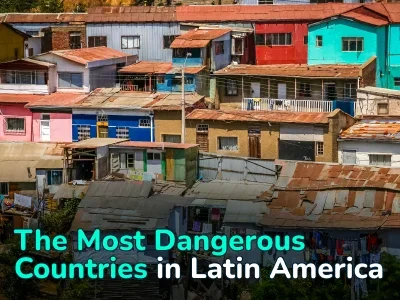
Education in Italy: Schools, University Admission, and Tuition Fees
Italy is rightfully regarded as one of Europe’s oldest educational «meccas.» Many institutions that continue to shape the structure of higher education across the continent were founded here. The most influential among them is undoubtedly the Bologna system, named after the University of Bologna.
Today, Italian education attracts students from all over the world. According to Italy’s Ministry of Universities and Research, around 109,681 international students with foreign citizenship are enrolled in Italian universities. This accounts for about 5% of the total student population, a relatively modest figure compared to 13% in Germany. However, what is significant here is the growth: in 2010, fewer than 60,000 international students were studying in Italy.
We have prepared a detailed overview of the Italian education system, focusing on its structural framework and local features.
The Italian Education System
The education system in Italy begins with early childhood education, divided into two stages: asilo nido (nursery, ages 0–3) and scuola dell’infanzia (kindergarten, ages 3–6). The first stage is fee-based and mainly run by municipalities; despite this, admission is highly competitive since demand greatly exceeds supply. In 2023, about 60% of applications for nursery places had to be rejected due to a shortage of capacity. The second stage consists of free kindergartens, attended by more than 90% of children aged 3–6, although attendance is not formally mandatory.
After that comes primary school (scuola primaria), which lasts five years. The curriculum includes mathematics, Italian, natural sciences, history, geography, foreign languages (usually English), music, and art.
Next is lower secondary school (scuola secondaria di primo grado), which lasts three years. At this stage, students deepen their knowledge of primary school subjects and prepare for a national exam.
The following level is upper secondary school (ages 14–19). This stage lasts five years, although only the first two years (up to age 16) are compulsory. Italian students can choose between several educational tracks:
- Liceo (Lyceum) — an academic program focused on humanities, sciences, languages, or the arts.
- Istituto tecnico (Technical Institute) — specialized in economics, management, technology, and applied sciences.
- Istituto professionale (Vocational Institute) — training in practical professions related to crafts, services, and production.
Studies conclude with the Esame di Stato (State Exam), the results of which grant access to university education.
Early Childhood Education in Italy
The modern model of early childhood education in Italy took shape relatively recently: in 2017, a decree unified nurseries and kindergartens into a single system known as educazione e istruzione dalla nascita ai sei anni («education and instruction from birth to six years»).
Nurseries remain underdeveloped, covering only about 360,000 children, or 28% of the relevant age group. By contrast, preschool education in Italy is far more accessible, reaching nearly 95% of children aged 3–6, one of the highest rates in Europe.
Unlike in many other European countries, Italian preschool curricula are not standardized; each institution has the freedom to design its own program. At the federal level, there are only Indicazioni nazionali (national guidelines), which emphasize the development of speech, social skills, creativity, and early concepts of numbers and writing.
School Education in Italy
Schooling in Italy begins with primary school, where children are introduced to general education subjects: Italian language, mathematics, natural sciences, history, geography, English (from the first grade), as well as music, art, physical education, and basic technology. Education is free of charge, and textbooks are funded by the state.
Since 2020, all levels of Italian schooling have included a compulsory subject called «civic education» (educazione civica) 33 hours per year. In primary school, students are introduced to Italian national symbols (flag, anthem), learn social etiquette, and environmental awareness. In lower secondary school, the focus shifts to the Constitution, state institutions, human rights, and ecological literacy. In upper secondary school, the program expands to cover law, economics, international relations, and digital ethics.
After primary education, the system is divided into stages. Lower secondary school (scuola secondaria di primo grado) deepens previous subjects and introduces a second foreign language (often French or German). At the end of the third year, students must pass a state exam (Esame di Stato conclusivo del primo ciclo) in Italian, mathematics, and foreign languages, as well as an oral interview, which helps determine their path in upper secondary education in Italy: academic, technical, or vocational.
Upper Secondary Education in Italy
At the upper secondary level, Italian schooling takes on features of professional training. Formally, it is still classified as «school,» but in content and structure, it closely resembles what many other countries call «college.» However, Italy does not have a separate college system, so when someone speaks about colleges in Italy, they usually refer to technical and vocational institutes.
At this stage, students can choose between two main types of institutions:
- Istituti tecnici (Technical Institutes) focused on economics, engineering, information technology, transportation, agriculture, and applied sciences. Up to 30% of the curriculum consists of laboratory and practical training.
- Istituti professionali (Vocational Institutes) is an institution of public education in Italy that is designed to prepare students for specific careers such as tourism, hospitality, design, fashion, services, and traditional crafts.
Both tracks conclude with the Esame di Stato, after which graduates receive the diploma di istruzione secondaria superiore (maturità). This diploma provides access to university, though in practice around 40% of vocational institute graduates choose to enter the labor market directly.
This trend is reinforced by the fact that Italy mandates work-based learning (alternanza scuola-lavoro). All upper secondary students complete internships in companies, many of which are ready to hire them immediately after graduation.
IFTS and ITS Academy
For those seeking additional qualification Italian courses after secondary school, there are specialized post-secondary programs. These are funded by the regions and the European Social Fund, which means tuition is either free or symbolic. The two main options are:
- IFTS (Istruzione e Formazione Tecnica Superiore) is a one-year program aimed at providing practical skills in specialized fields such as mechanics, logistics, renewable energy, and IT systems.
- ITS Academy (Istituti Tecnici Superiori) is a two-year program targeting strategic sectors such as digitalization, biotechnology, design, and fashion.
In 2024, about 28,000 students enrolled in ITS Academy programs. Of these, around 80% found employment within a year of graduation, while the remaining 20% chose to continue their studies at Italian universities.
Higher Education in Italy
As noted earlier, the universities in Bologna became the symbol of the «Bologna System,» which initiated the unification of educational standards across Europe. Today, Italy has around 100 universities, all of which operate under the CFU credit system (Crediti Formativi Universitari).
CFU represents not grades but student workload. One credit equals approximately 25 hours of study, including lectures, seminars, lab work, and independent preparation. On average, a student must earn 60 CFU per year, which corresponds to a full academic workload.
To obtain a bachelor’s degree (Laurea), students must complete 180 CFU over three years; for a master’s degree (Laurea Magistrale) — 120 CFU over two years. Single-cycle programs (e.g., medicine, architecture, law) require 300–360 CFU. Each course carries a credit value: for example, a standard subject may be worth 6 CFU, equivalent to about 150 hours of study.
Credits are awarded only after successfully passing the corresponding exam. Grading is recorded separately: course exams are graded on a 0–30 scale, while the final degree is awarded on a 66–110 scale, with 110 representing the highest result.
Degree structure in Italian universities:
- Laurea — Bachelor’s degree (3 years).
- Laurea Magistrale — Master’s degree (2 years).
- Laurea Magistrale a ciclo unico — Single-cycle programs (5–6 years), covering medicine, law, architecture, and certain teaching professions.
- Dottorato di Ricerca — PhD (3+ years).
According to the classification of the Ministry of Universities and Research (MUR), Italy’s higher education system includes four types of institutions:
- Public Universities (Università statali). Traditional universities funded by the state. Tuition fees are regulated through the ISEE income indicator (family income assessment).
- Legally Recognized Private Universities (Università non statali legalmente riconosciute). Private institutions accredited by MUR, whose degrees are state-recognized. They typically specialize in management, law, international relations, business, and medicine.
- Telematic Universities (Università telematiche). Online universities offering distance learning. However, exams and thesis defenses must be completed in person.
- Specialized Higher Schools and Institutes (Scuole superiori universitarie e istituti ad ordinamento speciale). Small, highly selective public institutions with a special legal status. Study in Italy for free, but admission is extremely competitive: in 2023, 3000 applicants competed for just 68 places.
Special emphasis is placed on expanding English-taught programs to attract international students. By 2025, Italian universities are offering study in English in Italy for over 700 master’s programs and more than 180 bachelor’s programs. The largest number of English courses are provided by polytechnic universities (Politecnico di Milano, Politecnico di Torino) and universities in the northern regions.
Best universities in Italy:
- Politecnico di Milano the country’s leading technical university and the only Italian institution ranked in the QS World University Rankings 2026 Top-100.
- Sapienza Università di Roma Italy’s largest university, with over 110,000 students, recognized among Europe’s best in humanities, archaeology, and physics.
- Università di Bologna the oldest university in Europe, a leader in law, humanities, and social sciences.
- Università di Padova is ranked in the QS Top-250, with strong programs in medicine, psychology, and biotechnology.
- Politecnico di Torino is renowned for excellence in engineering, energy, and transportation technologies.
- Università di Pisa and Università di Milano are regularly achieve top rankings in natural sciences and medical disciplines.
Admission to Italian Universities
Admission to public universities in Italy for international students is regulated by the Ministry of Universities and Research through the online platform Universitaly. This is where prospective students select their university, upload documents, and undergo preliminary verification. Once approved by the university, the application package is forwarded to the Italian consulate for student visa processing.
For admission to a bachelor’s program, applicants must hold a high school diploma equivalent to a 12-year education cycle. For master’s programs, a relevant bachelor’s degree is required, compatible in scope with the chosen field of study. Universities assess academic compatibility and may require interviews or internal entrance tests. Language requirements vary: Italian-taught programs generally require a B2-level Italian certificate, while English-taught master programs in Italy typically demand IELTS or TOEFL scores equivalent to B2—C1.
Certain fields classified as «nationally significant» have stricter admission rules and require passing a national entrance exam. These include medicine, dentistry, veterinary medicine, architecture, and education-related programs. For such professions, part-time or distance study is not allowed, and the number of seats is set annually by the Ministry. Competition is extremely intense: in 2024, more than 60,000 applicants competed for just 19,000 seats in medical faculties.
Until 2024, admission to English-taught medical programs or courses in Italy required the IMAT exam. Starting in 2025, however, the Ministry introduced a new format combining general cognitive assessments with natural science knowledge testing.
After receiving an admission letter, students must apply for a visa and, upon arrival in Italy, submit an application for a permesso di soggiorno (residence permit). Key requirements include proof of sufficient financial resources (about €6000 per year), health insurance, and confirmation of accommodation.
Top universities in Italy for international students:
- Politecnico di Milano the leader in English-taught master’s programs (over 40 programs). Actively participates in Erasmus exchanges and offers scholarships for international students.
- Università di Bologna is one of Italy’s most international universities, with over 6% of students from abroad. Hosts Erasmus Mundus master’s programs and double degree tracks with European and U.S. universities.
- Università di Padova supports foreign students through English-taught master’s degrees, and dedicated scholarships in Italy.
- Sapienza Università di Roma offers 50+ English-taught courses, its own grants for international master’s students, and Italy’s largest network of global partnerships.
- Bocconi University (Milan) a private university specializing in business and economics. One of Italy’s most globalized institutions: 20% of students are international, and English is the main language of instruction across key programs.
- Politecnico di Torino is highly international, especially in IT, aerospace, and mechanical engineering. Provides English-taught tracks at both bachelor’s and master’s levels and Italian language courses.
Cost of Education in Italy
A defining feature of the Italian education system is its affordability, ensured by strong state support. Primary education in Italy is free of charge, as is most secondary schooling, while university tuition fees are calculated based on family income. Italy also applies a «no-tax area» policy, which fully exempts students from low-income families from paying tuition.
The main exception is nursery care, where expenses are borne by families. Municipal nurseries cost on average €200—400 per month. In large cities such as Milan, families pay a fixed annual registration fee of €56. Private nurseries, however, cost roughly twice as much.
Education for children aged 3–6 years is free in public kindergarten in Italy, with parents paying only for meals and extra services. Private or bilingual kindergartens cost €3000—8000 per year, while international schools can charge up to €15,000 annually.
Primary and secondary public schools are free, with expenses limited to textbooks, transportation, and meals. Private and international schools in Italy, however, charge between €7000 and €40,000 per year.
Higher Education Costs
Public universities in Italy typically charge around €3900 per year. However, fees are reduced for families with incomes between €22,000—30,000, and those below the minimum threshold are fully exempt, paying only a €156 administrative fee.
Average Italy education cost:
|
University |
Tuition Fees |
Key Features |
|
Politecnico di Milano |
up to €3726 |
Discounts based on ISEE; installment plans available |
|
Università di Bologna |
from €157 + income-based fee |
Progressive tuition scale linked to family income |
|
Università di Roma Tor Vergata |
fixed €1000 for foreigners (or €500 for students from developing countries) |
Special rules for international students |
|
Bocconi University (Milan) |
€16,700–18,200 |
Prestigious business school with fixed high tuition rates |
The cost of study in Italy for international students in most Italian public universities is the same as for domestic students. However, universities may apply fixed tariffs at their discretion.
Overall Financial Burden on Students
While Italy’s study cost is considered affordable by European standards, the real financial burden on students is shaped not only by tuition fees but also by living costs. Annual student expenses are typically distributed as follows:
- Housing: €3600—7200 per year.
- Food: €2000—3000 per year.
- Transportation and miscellaneous costs: €600—1200 per year.
- Study materials and fees: from €500 (public universities) up to €4000 (private universities in Italy).
As a result, for a student living away from home, the total cost of study averages €12,000—15,000 per year. To reduce this burden, Italy has developed a multi-level student support system, which includes regional scholarships, national grants, and university initiatives.
Student support in Italy
- Regional Scholarships (DSU — Diritto allo Studio Universitario). Each Italian region provides scholarships that may cover not only tuition but also housing, meals, and sometimes transport. Local students typically receive €2000—3000 per year, while non-resident students may get up to €5000, and international students — up to €8000. Support can take the form of direct payments, free accommodation in student residences, or subsidized meals in university cafeterias.
- MAECI Scholarships (Ministry of Foreign Affairs and International Cooperation). Special grants for international students amounting to €9000 per year, disbursed in three installments.
- University Grants. Almost every major university in Italy has its own financial aid programs for students.
Additionally, Italy participates in the Erasmus+ program, which supports study at partner universities across the EU and partially covers living costs. Erasmus scholarships usually range from €250 to €500 per month.
Frequently Asked Questions about Education in Italy
How much does studying in Italy cost?
In public universities, annual tuition fees depend on family income (ISEE). If the family’s annual income is below €22,000, the student is fully exempt from paying tuition. For incomes between €22,000–30,000, the standard fee of €3900 is reduced by 80–10%. The minimum mandatory payment is around €156 (regional tax and stamp duty). In private universities, tuition ranges from €7000–8000 to €18,000 per year. Including living expenses, a student typically spends €12,000–15,000 annually.
How can I get a scholarship to study in Italy?
The main support mechanism is regional DSU scholarships (Diritto allo Studio Universitario). These cover not only tuition fees but also housing, meals, and sometimes transportation. For international and non-resident students, grants can reach up to €8000 per year. In addition, the Italian Ministry of Foreign Affairs (MAECI) awards annual scholarships to study in Italy to foreign students worth €9000, along with health insurance and exemption from university fees.
How do I apply for a master's degree in Italy?
To enroll in a master’s degree program (Laurea Magistrale), you need a bachelor’s degree equivalent to the Italian first cycle. Knowledge of Italian is not required, as many programs are offered in English. For these, universities require proof of English proficiency at B2–C1 level (B2 for Italian-taught programs). Universities verify academic compatibility, and in some cases, may require an interview or internal test. Applications must be submitted via the Universitaly platform, after which visa procedures follow.
Can I join a learning Italian in Italy program while studying at university?
Many universities and private schools provide opportunities for international students to improve their language skills. Almost every major university has a Centro Linguistico (Language Center), where students can attend intensive or semester-long classes.
In addition to university centers, accredited institutions across the country specialize in teaching Italian to foreigners. Depending on your goals, you can choose short summer schools, daily intensive programs, or full-year preparatory courses. Italian language courses in Italy are often considered the most effective solution, as it combines immersion with formal learning.
Are there colleges in Italy for international students?
In Italy, the higher education system does not include “colleges” in the Anglo-American sense. Instead, international students enroll directly in universities, polytechnics, or specialized academies. So, when people search for colleges, they usually mean institutions that provide English-taught bachelor’s or master’s programs.
These programs are widely available at major universities such as Politecnico di Milano, Bocconi University, Università di Bologna, and Sapienza Università di Roma. Many of them also offer preparatory courses, foundation years, and study-abroad tracks designed specifically for foreign students.
Author
I write informative articles about real estate, investments, job opportunities, taxes, etc.
























